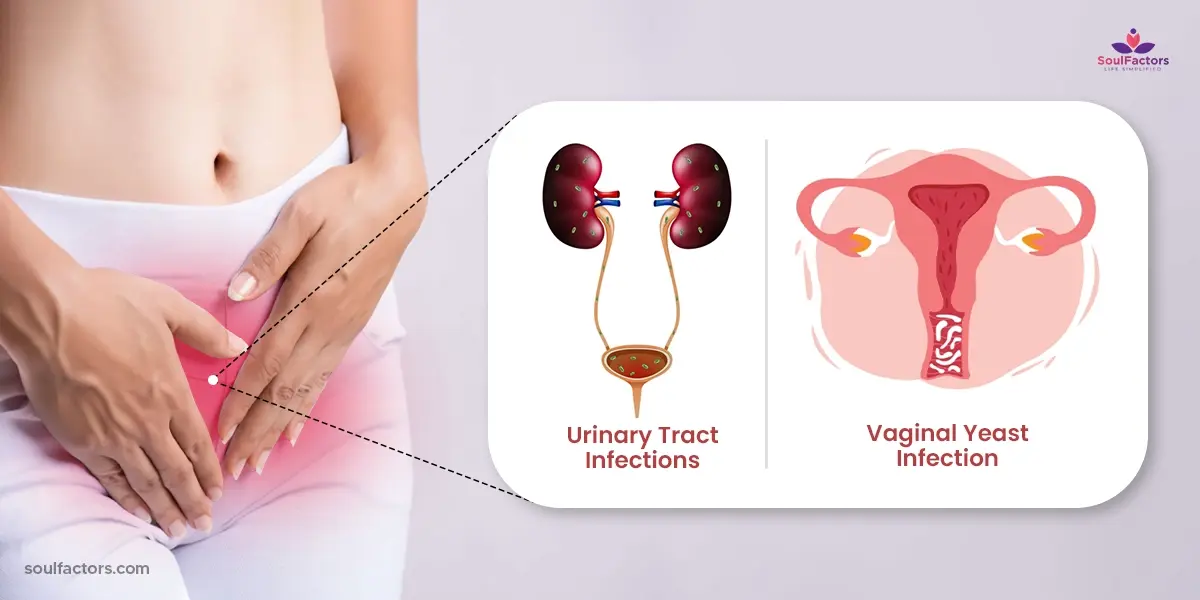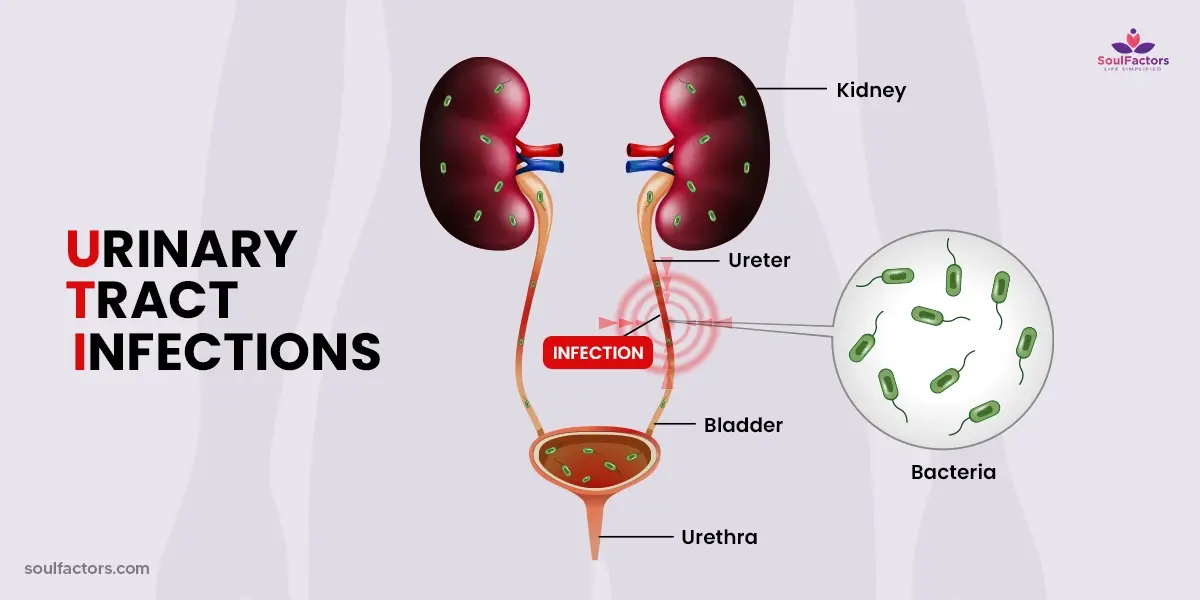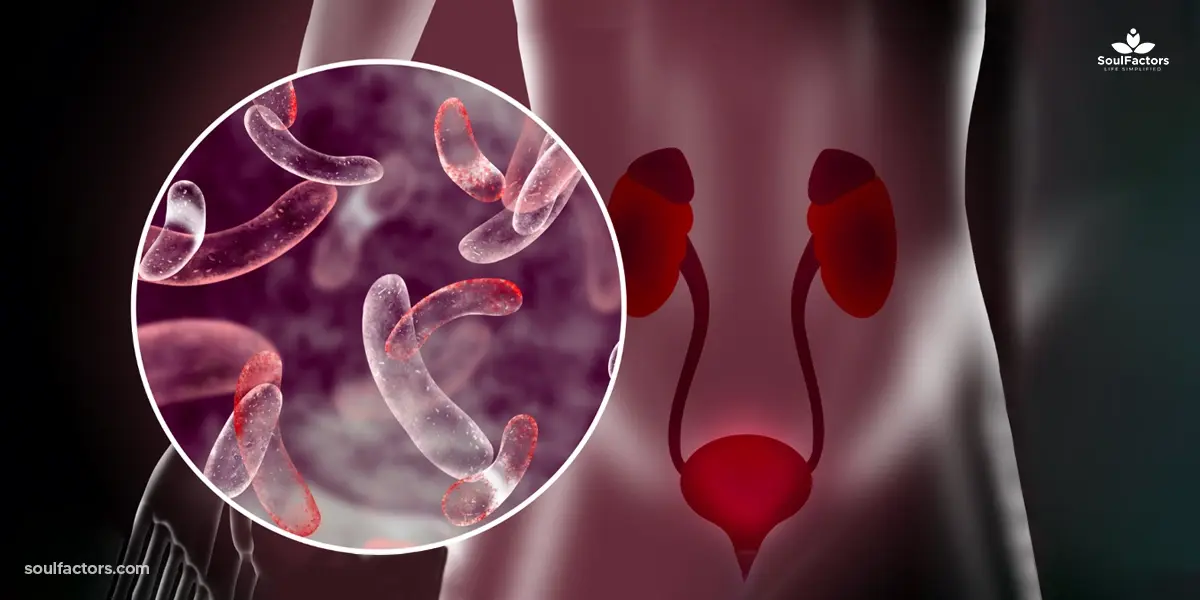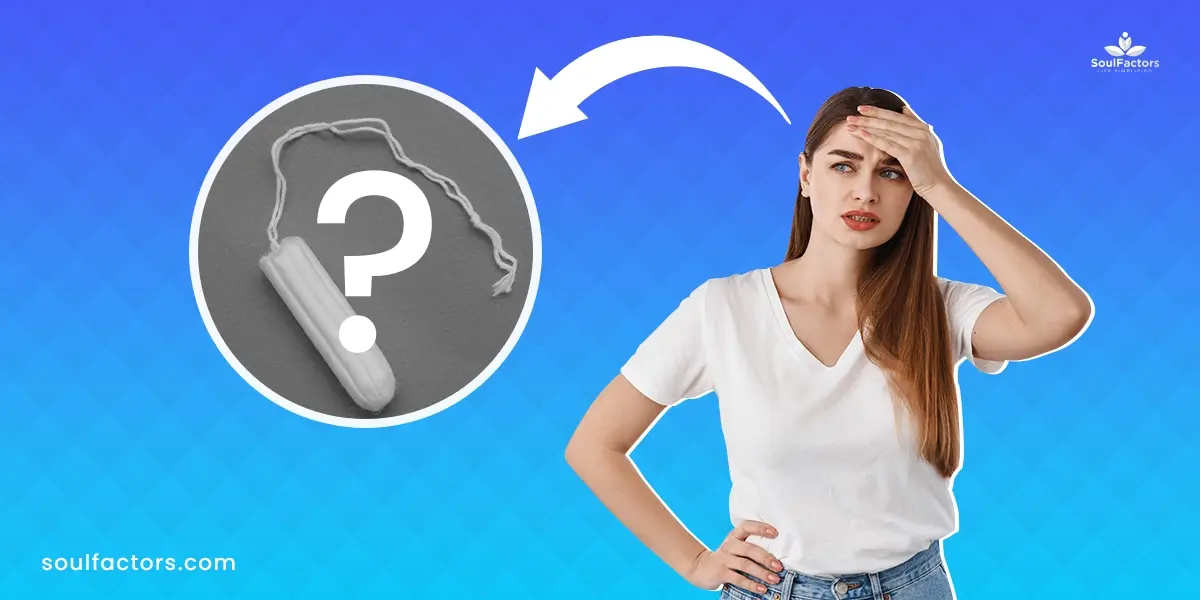Yeast Infection Vs UTI: Understanding the Difference
Weigh in the differences between UTIs and Yeast Infections, their symptoms, causes, and treatments to manage your reproductive health with more confidence and clarity.
On Feb 21, 2024 – 10 minutes read

Have you ever felt puzzled and a little embarrassed when dealing with a health issue in your intimate areas? It can be hard to tell the difference between symptoms of a Yeast Infection vs UTI (Urinary Tract Infection) without proper medical guidance. If you’re trying to figure out whether you’re experiencing a UTI or a Yeast Infection in your vagina or vulva, know that you’re not alone. Lots of women face this problem, and sometimes they hesitate to get help because of its intimate nature. But it’s really important not to let embarrassment stop you from getting help for possible infections in your urine, bladder, or genital area.
Understanding The Two Infections
Both UTIs and yeast infections can have similar symptoms, which can make it hard to tell them apart. This confusion can sometimes lead to the wrong diagnosis or treatment.
UTIs are a common problem for many women. They happen when bacteria get into the urinary system, causing discomfort and sometimes serious issues like kidney infections. On the other hand, yeast infections occur when there’s too much fungus in the vaginal area. They cause itching, irritation, and abnormal vaginal discharge.
This article aims to shed light on both conditions, providing clarity on yeast infection vs UTI symptoms, treatments, and ways to prevent them. For many women, understanding these infections is not just about treatment but also about taking proactive steps to maintain overall intimate health. This includes wearing breathable clothing, staying hydrated with plenty of water, practicing safe sex, and consulting a doctor promptly for proper diagnosis and treatment, especially for those with underlying conditions such as diabetes who may be more prone to infections.
What Is UTI?

A Urinary Tract Infection (UTI) is a painful infection that can affect any part of the urinary system, including the kidneys, ureters, bladder, and urethra. Commonly experienced by women, UTI symptoms include:
- Burning sensation when peeing
- Frequent urges to urinate
- Cloudy or strong-smelling urine
- Pelvic pain
These symptoms can range from mild to severe and are often mistaken for other conditions, such as yeast infections or sexually transmitted infections (STIs).
The main reason for UTIs is bacteria getting into the urinary tract, usually through the urethra and moving up into the bladder.
In kids, UTIs might show up differently, like having a fever, being cranky, or not eating well. Making early detection and treatment is crucial for preventing complications. Make sure to drink enough water, keep clean, and see a doctor right away if you notice any signs of a UTI. 70% of women with Bacterial vaginosis may also have symptoms of UTI.
What Is Yeast Infection?

A Yeast Infection, medically known as Candidiasis, is a fungal infection primarily caused by the overgrowth of Candida, a type of yeast. Yeast infection affects the vagina, leading to symptoms like itching, burning, irritation, and a thick, white discharge that resembles cottage cheese. Yeast infections can also cause discomfort during urination and intercourse. It’s commonly believed that only women get yeast infections, but men can also be affected by them.
To alleviate symptoms and prevent recurrence, it’s essential to maintain good hygiene practices.
- After urination, always wipe from front to back to avoid spreading bacteria from the anus to the vaginal area.
- Opt for breathable cotton underwear and avoid tight-fitting clothing to reduce moisture and promote airflow.
- Drinking plenty of water can help flush out toxins and maintain vaginal health.
- Changing out of wet swimsuits and sweaty workout clothes promptly can also prevent yeast infections.
- Avoid douching or using scented feminine hygiene products, as they can disrupt the natural balance of vaginal flora.
- If you suspect you have a yeast infection, talk to your doctor for proper diagnosis and treatment.
UTI vs Yeast Infection In Toddlers
Distinguishing between UTI and yeast infection in toddlers can be challenging due to overlapping symptoms.
UTIs in toddlers often manifest through symptoms like:
- Fever
- Irritability
- Changes in eating habits
- Unusual-smelling urine.
Yeast infections, while less common in this age group, can occur, presenting symptoms such as:
- Diaper rash
- Redness
- Irritation in the genital area.
Unlike grown-ups, toddlers might not show obvious signs like pain when peeing or itching when they have these issues. So, parents need to watch out for any strange behavior or changes in their child’s body. It’s really important to take them to the pediatrician early on so they can get the right diagnosis and treatment.
UTI Vs Yeast Infection: Symptoms

Symptoms of UTI:
- Frequent need to urinate
- Burning sensation during urination
- Cloudy or bloody urine
- Pelvic pain, especially in the center of the pelvis and around the pubic bone
- Symptoms of a fungal UTI may include the typical UTI symptoms along with the presence of fungus in the urine.
- Sometimes symptoms of Interstitial cystitis also resemble the symptoms of UTI.
Symptoms of Yeast Infection:
- Itching and irritation in the vaginal area
- Swelling and redness around the vulva
- Yeast infection symptoms include milky white discharge, often thick, and odorless, resembling cottage cheese.
- Pain during intercourse
- Burning sensation, particularly during urination
UTI vs Yeast Infection: Causes
Causes of UTI:
- UTI is caused by bacteria, typically E. coli entering the urinary tract.
- Sexual activity, especially in women, can increase the risk.
- It is common for women who engage in sexual activity for the first time or after a period of abstinence to experience UTI (called “honeymoon cystitis”)
- Use of certain types of birth control, such as diaphragms.
- Menopause, as decreased estrogen levels make the urinary tract more vulnerable to infection.
Causes Of Yeast Infection:
- Yeast infection is caused by fungus (overgrowth of Candida fungus), often due to an imbalance in the vaginal flora.
- Antibiotic use, which can disrupt the natural balance of bacteria in the vagina.
- Hormonal changes, especially during pregnancy, menstruation, or menopause.
- Excessive sugar intake and stress.
- Uncontrolled diabetes can lead to higher sugar levels in the mucous membranes, encouraging fungal growth.
- A weakened immune system, either due to illness or medication use.
UTI Vs Yeast Infection: Risks
Risks associated with UTI:
- Potential for infection to spread to the kidneys, leading to more serious conditions like pyelonephritis.
- Increased risk during pregnancy, potentially leading to premature labor or low birth weight if untreated.
- Chronic UTIs can lead to scarring in the bladder and kidneys.
- Resistance to antibiotics, particularly if UTIs are recurrent and improperly treated.
Risks associated with Yeast Infection:
- Chronic infections can cause significant discomfort and impact the quality of life.
- Tight clothing increases the risk of yeast infection
- For pregnant women, yeast infections may pose a risk to the baby during delivery.
- Recurrent infections might indicate an underlying health issue, like diabetes or a weakened immune system.
- Severe infections can lead to complications, especially in women with suppressed immune systems.
UTI Vs Yeast Infection: Duration
UTIs usually resolve quickly, often within 2-3 days of starting antibiotic treatment. However, severe or complicated infections might require longer treatment.
Yeast infections generally clear up within one week of starting antifungal therapy. The duration can vary based on the severity and the medication used.
When To Seek Medical Help
- If you have symptoms of a UTI like back pain, fever, or nausea, it might indicate a possible kidney infection, see a doctor right away. It’s not a good idea to diagnose yourself. It’s important to get diagnosed and treated early.
- For yeast infections, consult a doctor if symptoms persist after over-the-counter treatment, if the infection recurs frequently, or if you’re pregnant.
- If you notice any signs of a UTI or yeast infection in toddlers, it’s important to take them to the doctor as they cannot articulate symptoms clearly.
- If you notice unusual symptoms or those that worsen rapidly, it is important to consult a healthcare professional.
Treatment Options

UTI Treatments:
- Antibiotics like Trimethoprim/Sulfamethoxazole, Nitrofurantoin, or Cephalexin are commonly prescribed.
- Drinking plenty of fluids helps flush bacteria from the urinary tract.
- For recurrent UTIs, a prolonged course of low-dose antibiotics may be suggested.
Yeast Infection Treatments:
- Over-the-counter antifungal treatments such as Clotrimazole, Miconazole, or Tioconazole are effective for most yeast infections.
- Prescription oral surgeon antifungals like Fluconazole are used for more severe or persistent infections.
- Vaginal suppository tablets with Clindamycin are given to flush out the infection.
- Good genital hygiene and avoiding irritants are key preventive measures.
Concurrent UTI and Yeast Infection Treatment:
- Simultaneous occurrence of both infections requires a combined treatment approach with appropriate antibiotics and antifungal medications.
- Accurate diagnosis and specific treatment plans are critical for effective treatment in such cases.
Prevention Tips
- Hydration: Stay hydrated by drinking plenty of water to dilute urine and aid in flushing bacteria from the urinary system.
- Hygiene: Practice good genital hygiene, including wiping from front to back after using the bathroom. Use good quality sanitary products. Opt for pure cotton underwear and change it frequently to prevent trapping moisture. If you’ve had a yeast infection, discard old underwear and switch to a fresh set. Wash underwear thoroughly with an antiseptic liquid and keep them separate from other clothes to prevent cross-contamination.
- Avoid Irritants: Steer clear of scented hygiene products, vaginal beauty creams, and activities like douching, which can disrupt the natural balance of bacteria and yeast.
- Diet: Maintain a balanced diet rich in probiotics, such as yogurt, to support healthy bacteria in the body.
- Urination Habits: Refrain from holding urine for prolonged periods.
Important tip: Empty your bladder soon after sexual activity to flush the bacteria out. This will considerably reduce the risk of urinary infections.
Home Remedies For UTI And Yeast Infection
- Cranberry Juice: Effective for UTIs, cranberry juice helps prevent bacteria from sticking to the walls of the urinary tract.
- Probiotics: Incorporate yogurt and other probiotic-rich foods into your diet to restore the natural bacterial balance, providing relief from yeast infections. It’s a good home remedy for yeast infections.
- Apple Cider Vinegar: Its antibacterial properties can help with UTIs, while its acidity can balance pH levels in yeast infections.
- Garlic: Known for its antifungal properties, garlic can assist in managing yeast infections.
- Baking Soda Bath: Soothes vaginal itching and discomfort associated with yeast infections.
- Water: Adequate hydration is key for UTI prevention and reducing irritation during yeast infections.
FAQs
UTIs may cause a strong, unpleasant urine odor. Yeast infections typically don’t affect urine odor but can cause a distinct vaginal odor.
While more common with yeast infections, UTIs can also cause some degree of itching due to irritation and inflammation.
Some mild UTIs may resolve without treatment, but yeast infections usually require antifungal medication for relief.
Pay attention to specific symptoms. UTIs often cause painful urination, while yeast infections are more likely to cause itching and discharge.
Not directly, but the discomfort from a yeast infection might lead to habits (like frequent wiping) that could contribute to a UTI.
Urine tests can identify UTIs but not yeast infections. A vaginal swab is usually necessary for a yeast infection diagnosis.
Home remedies like cranberry juice for UTIs and probiotics for yeast infections can offer relief, but consult a doctor for persistent symptoms.
Final Words
Knowing the differences between UTIs and yeast infections is really important for getting the right treatment. We’ve talked about their symptoms, causes, risks, and treatments to give you the information you need. It’s also good to remember that both of these conditions are common and can be treated. Even if you feel embarrassed or unsure, it’s really important not to wait too long to get help.
If you’re ever in doubt or your symptoms persist, don’t hesitate to reach out to a healthcare professional. Also, there is no reason to be embarrassed about getting the meds yourself. It’s essential to prioritize your health and well-being. Seeking appropriate care is a vital part of that journey. So, stay informed and take proactive steps to maintain your urinary and reproductive health.

Subscribe to Newsletter
Elevate your routine, stay on trend, and embrace a personalized beauty journey with our curated insights.







Write a Comment